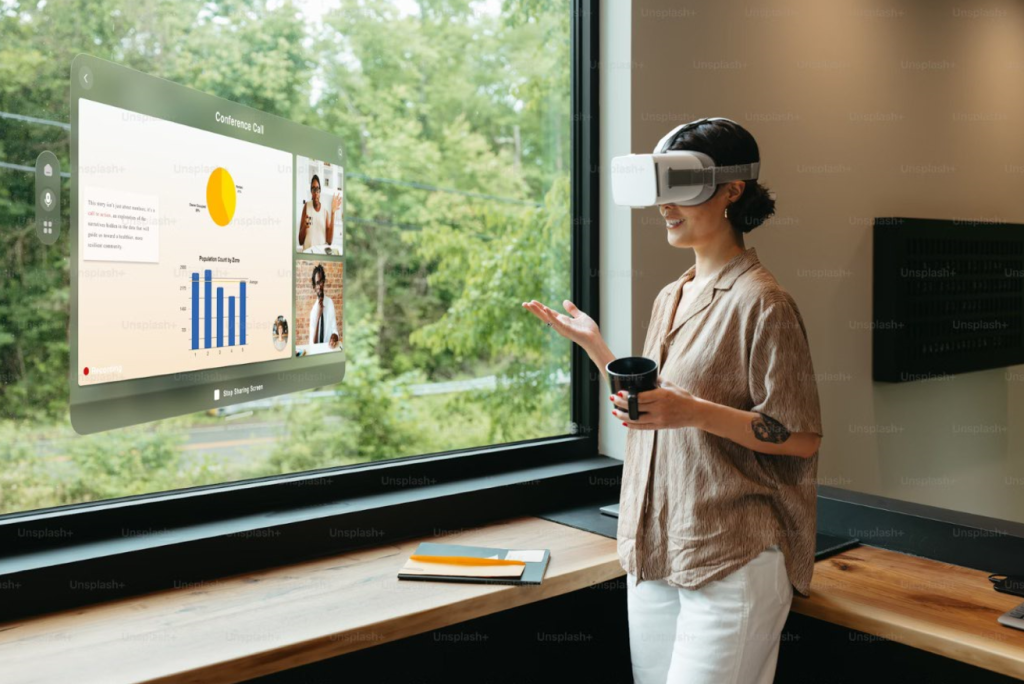Born in late 1994, I am in the line between two generations — sometimes I am a millennial and sometimes a true Gen Z.
My early years were marked by the profound arrival of the internet and the swift rise of smartphones. Now, I stand witness to yet another technological revolution: virtual reality (VR) in education.
At UM6P, this isn’t a vision for tomorrow but a reality today, transforming classrooms into ways we once only dreamed about. My educational journey began in modest classrooms equipped with basic computer labs and the occasional projector. As I advanced, technology evolved alongside me, growing in tandem with my own learning. Smartboards replaced chalkboards, tablets became indispensable, and online learning platforms took center stage. Then came my first encounter with VR which was nothing short of transformative. Walking through historical sites and exploring scientific phenomena in 3D felt like breaking free from the confines of traditional learning. Talking to any professor about VR, you’ll see their eyes light up with excitement. VR transforms passive learning into active engagement. Reflecting on my own educational experiences, I can’t help but imagine how different it would have been if I could have walked through ancient ruins or visualized complex scientific concepts in three dimensions. VR makes learning tangible and memorable, catering to diverse learning styles and needs. Furthermore, it fits perfectly with the “learning by doing” philosophy, allowing students to practice skills in a virtual environment before applying them in the real world.
University Mohammed VI Polytechnic stands as a testament to educational excellence, where the future of learning is being forged every day. This extraordinary, super-equipped campus offers students technological tools, creating a top, tech-savvy environment. The university’s dedication to integrating the latest technologies ensures that students receive an education that is not only current but forward-thinking.
As the Business Partner Communication at SAP+D, School of Architecture, Planning and Design, I am particularly proud to see architecture students having access to the best equipment and tools in different laboratories that were conceived with great vision. VR enables them to design, visualize, and refine their projects in immersive virtual environments, preparing them for real-world challenges and successes.
Looking forward, it’s exciting to imagine how AI will further transform education. Just as VR has revolutionized the classroom experience, AI promises to bring even more profound changes, personalizing learning, automating administrative tasks, and providing deeper insights into student performance. The journey of technological advancement in education is far from over, and I am happy and impatient to see where it takes us next.
By Dounia Jawhar, School of Architecture Planning & Design


Leave a Reply